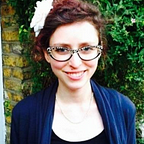What is science busking, why do you do it and how do you do it?
What is science busking, and why do you do it in your school?
Science busking is fairly self-explanatory — as I tell the children, it’s a bit like a magic trick, except that you want the other person to understand how it works! I find it helpful to break it down into three key steps for the children:
- Show someone (another child, a family member or teacher) a science “trick”
- Challenge them to try it out
- Help them understand why it happens
These quick science demos or activities work well at science fairs, but are also ideal for bringing a bit of science to events that wouldn’t usually involve science. For instance, many of the schools I work with bring science busking to parents’ evenings and summer fairs —any event at which there will be friends and families, helping to reach more members of the school community and making science an integral part of the school culture. It’s wonderful to see one child, who you have trained, teach another child to do a science busking trick, then watch this second child excitedly bring a family member over to have a go as well.
The benefits to the children in the science busking team are significant —they develop their scientific knowledge and understanding of how it applies in practice, develop confidence communicating with others, and gain valuable practice of giving clear scientific explanations. And they get to be seen by others as scientific experts and role models.
How do you set up science busking in your school?
STEP 1: Choose some science busking activities to try out, maybe half a dozen to start with. At the end of this post is a list of the ones I have found to work especially well. I give my pupils lots of options and let them choose a shortlist of around 6 to test.
STEP 2: Make a resource list (I ask the children to do this — a post-it note per activity can be a useful approach).
STEP 3: Gather all your resources. You might need to buy some of them, but you can do most science busking tricks with resources that you already have at school.
STEP 4: Carry out a risk assessment — is there a chance of you injuring yourself? Is there a chance of the person you are interacting with injuring themselves? Think about how you will make it as safe as possible (e.g. where people should stand, instructions to give them), but also plan what you will do just in case someone does get hurt. I do this with the children.
STEP 5: Try out the activities with the children! I ask them to: think about how you will introduce each activity, think about questions you might ask, and how you will make it as dramatic / surprising as possible — you are putting on a show! It can be very powerful to ask your audience to predict what they think will happen… Showing them footage of magicians can be helpful at this stage.
STEP 6: Make sure that the children understand the scientific explanation behind your demo or activity — you will most likely need to guide and scaffold this carefully. If there are any that they don’t understand (some are more appropriate for older children as the scientific explanation is based on scientific principles that they haven’t learnt about yet), I would ask them to choose a different activity.
STEP 7: Get the children to practice each of the science busking activities with other members of the science busking team, giving each other constructive feedback. They need to practice the scientific explanation — which words to use and any analogies that could help people understand it. It can be helpful to get a few groups, who you have seen do it particularly well, to model to the others, and discuss what they did well.
STEP 9: You might want to update your risk assessment now that you’ve actually tried out all the experiments — consider any extra precautions you need to take with younger children and also think about whether any of the experiments are unsuitable for them. Again, I do this with the children — it is crucial that they understand how to stay safe.
STEP 10: Get out and busk! It’s worth taking it in turns to lead on different activities to keep them fresh — a rota is a good idea if you have a 1hr event for instance, and make sure you all have time for breaks.
Ideas for science busking activities
- Musical coat hangers: http://www.physics.org/marvinandmilo.asp?id=7 — we also do this with wire oven racks (even more dramatic than coat hangers), and with slinkies (so far absolutely everyone’s favourite!). Excellent for Y4, reinforces learning about how sound travels through different materials.
- Optical illusions: can be found on lots of websites, books and kits.
- Colour wheels: you can make these yourself with cardboard, 2p coins, white paper and pens, or buy them from somewhere like this http://educationharbour.com/product-category/science-meets-magic/
- Diffraction glasses: these are very cheap and spectacular, I get them from http://educationharbour.com/product-category/diffraction-glasses/ (If you’re buying lots, ask for a bulk discount!). I’d advise to only use these indoors, or outside on a cloudy day, as it’s important not to look directly at the Sun when wearing them! They also make excellent science rewards.
- Energy stick: there are plenty of places where you can buy these, this website has a helpful explanation of how they work https://www.stevespanglerscience.com/store/energy-stick.html#product-description
- This is a comprehensive list of science busking activities — note that it’s aimed at pupils aged 16+ but plenty of the activities can be undertaken by primary aged pupils under adult supervision. Some of our favourites are on pages 13, 14, 16, 19, 22, 24, 28, 29 and 30.
